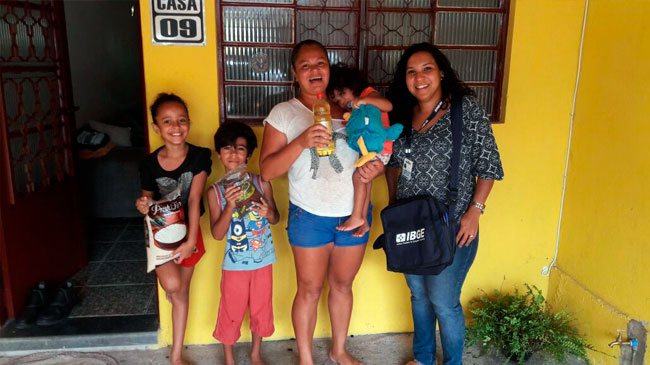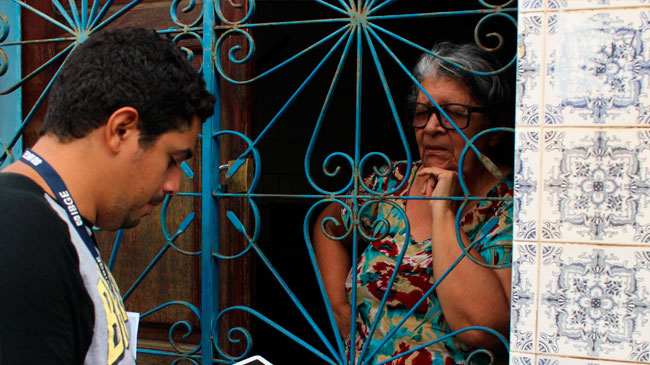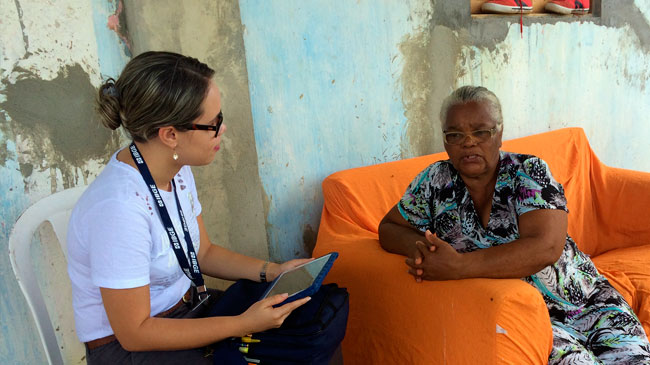Household expenditure
Survey reveals regional diversity in Brazilian food intake
May 08, 2018 09h03 AM | Last Updated: June 05, 2018 03h45 PM
House by house, street by street, the IBGE's Consumer Expenditure Survey (POF) provides a daily x-ray of Brazilians, showing their living conditions, food, consumption, income, among other aspects. The collection of the POF is expected to end in June, when 75 thousand households will have been visited. One piece of the information collected by the survey is what is on the Brazilians' table in each state of the country, unraveling regional preferences for food that often go unnoticed. On the field since June last year, the POF will update the food profile of the Brazilian, which was last accounted for in its 2009 edition. The 2009 issue is the basis of the current calculation of food inflation, for example.
Despite the time gap, some habits still show in the routine of the population. It is the case of black beans in Rio de Janeiro (8.3 kg per year in 2009), for example, four times higher in the state than in the rest of Brazil (2 kg) and very common in the house of Dona Suzette, 62, visited by POF in May this year. "Everybody I know here in Rio eat black beans. We eat them every day," says the resident of the neighborhood of Cavalcanti, in the North Zone of the capital of Rio, who lives with her husband and son.
IBGE survey agent, Renan Coelho, 27, was responsible for visiting Mrs. Suzette's house. The student of Public Administration says that he was well received by the residents of Rio de Janeiro. "The overall receptivity is good. In some specific cases, people are not very in the mood of answering the questions, but they do it out of politeness. But after that it becomes more difficult to find the person to make the second interview. But such cases are 10% or 15%. Other than that, it's quite ok," he explains.
Suzette, a housewife, explains that her family doesn't do without French loaf, one of cariocas' favorite. "I eat a lot of French loaf. Sliced bread also, but not always. What I do like is the French loaf," she says. In the state of Rio, each person consumed an average of 17.2 kg of French loaf a year in 2009, against 12.5 kg in the rest of the country. The sliced bread was twice as much consumed in Rio (2.2kg versus 0.8kg).
The state capital is just one of the 53 cities that will have its households visited in Rio de Janeiro, with a total of more than 4,400 houses.
In the house of Joelma Oliveira, 34, lunch does not escape the traditions of Minas Gerais: it always has rice, beans, vegetables and greens. Meat appears just in a few days of the week, usually pork loin or ham. According to data from 2009, Minas Gerais is the largest consumer of these two products, along with fresh bacon, ribs and porcine viscera. The animal is preferred in the state. "It's easier to buy and tasty too," she explains.
The housewife lives with five children and her husband in Ribeiro das Neves, Metropolitan Area of Belo Horizonte. The table also has other typical dishes of the state's cuisine: “canjiquinha” with ribs, “tropeiro” beans and chicken with okra. The latter was recently consumed by the family, increasing POF's statistics: Minas led the per capita consumption of the item in the 2009 ranking, followed by Bahia and Sergipe.
When it comes to breakfast or snacks, it is common to associate the State with Brazilian cheese bread. Nevertheless, curiously enough, it is not the greatest consumer of the food item, losing to the Federal District (top of the ranking) and Goiás (second), respectively. The product would be more present at Joelma's house if the price were more affordable. Today, the family consumes it about twice a month.

(Photo: Helena Tallmann)
The famous minas cheese is another abundant ingredient in the state cuisine and faces the same challenge as the cheese bread: although tasty, the price may be too "salty". This is why the Joelma often chooses Mozzarela or prato cheese. "We rarely buy a whole cheese." Contrary to common sense, according to data from 2009, the highest average consumption of the product is attributed to Pernambuco, then comes Paraíba, Rio de Janeiro, Rio Grande do Norte and finally Minas Gerais.
The cup of coffee, however, does not fail expectations, and Minas Gerias presents the largest per capita acquisition of ground coffee: almost 3kg per year. To go with it, the state is also at the top consumer of doughnuts, and among the top ten Federation Units in acquiring the categories "biscuits, sweet rolls, etc." and "cakes." A common tradition in some municipalities of Minas Gerais, cornmeal (or broa) cake is sold in the neighborhood by the manufacturer or retailer. Joelma buys it at her front door.
One of the most popular desserts in the family home is dulce de leche. "We buy it once a month or so and we have a spoonful of it alone," says Joelma. In the category of "sweets and bakery products", milk-based candy is the most acquired item by Minas population (4th place among the States). Then, chocolate bar and the ice cream get tied up, both with Minas Gerais in the eighth position.
By the end of data collection, the Brazilian Consumer Expenditure Survey will have visited 5,600 households in Minas Gerais in 202 municipalities.
In Maranhão, POF will visit more than 2.6 mil households
More than 2,600 households in 89 cities in Maranhão will be visited during the survey. As a whole, 2,637 Maranhão residences will be interviwed during the four quarters of collection, which ends in May. In São Luís, the state capital, 529 families will be visited.

(Photo: Leandro Santos)
One of the interviewees during the survey was Carmelita da Silva, 76 years old, retired. Living downtown, she talked about her eating habits, a diet of simple food like chicken, fish and shrimp that she buys in the Central Market, near her home. The self-employed Luiz Gonzaga da Silva, 68, a resident of the São Francisco district, prefers chicken and beef, and, in turn, buys food at a local fair.
The survey also serves as a way of learning for those who act directly in the application of questionnaires. This is the case of research agent Michelle Nunes, 30. "We did a training for the data collection. The difficulty is something we found in the first moment, but then it was very quiet, "he said.
In Bahia, tradition is on the table
In the houses in Bahia, regional food is never out of fashion. Priscilla Marcelle Sousa, one of the survey and mapping agents for POF in the state, reported that the ingredients of typical dishes - such as palm oil, chestnut and ginger - were the most cited in the Holy Week period, when local families usually prepare traditional recipes, such as fish stew, "vatapá" and "caruru".
For Maria Helena de Jesus, who is retired, beans are an indispensable item in the family menu. "Today, if beans are missing, the meal is not complete. Since we were children, we've eaten rice and beans, so we got used to it," she says. And it's not any kind of beans, it's the "carioquinha", also known as "mulatinho"(brown beans), in contrast to black beans. Bahia is the fourth largest per capita consumer of the product (1.4kg per year) in Brazil and, curiously enough, it surpasses by a wide margin Rio de Janeiro, only the 20th in the ranking (0.05kg).
For the housewife Maria Cristina Pereira, fruits and vegetables are indispensable items in the family's dietary intake. "I've learned to worry more about healthy eating, but I cannot always buy healthy food," she explains. The two informants live in Simões Filho, a city in the Metropolitan Area of Salvador, one of the 136 municipalities that will participate in the collection in the state, with a total of more than 4 thousand households.
"This is a sample survey. It works as a small drop of your blood, which contains all the information about your body. That is what a sample survey does", says POF supervisor in Bahia, Carlos Rui.

(Photo: Rita Martins)




















